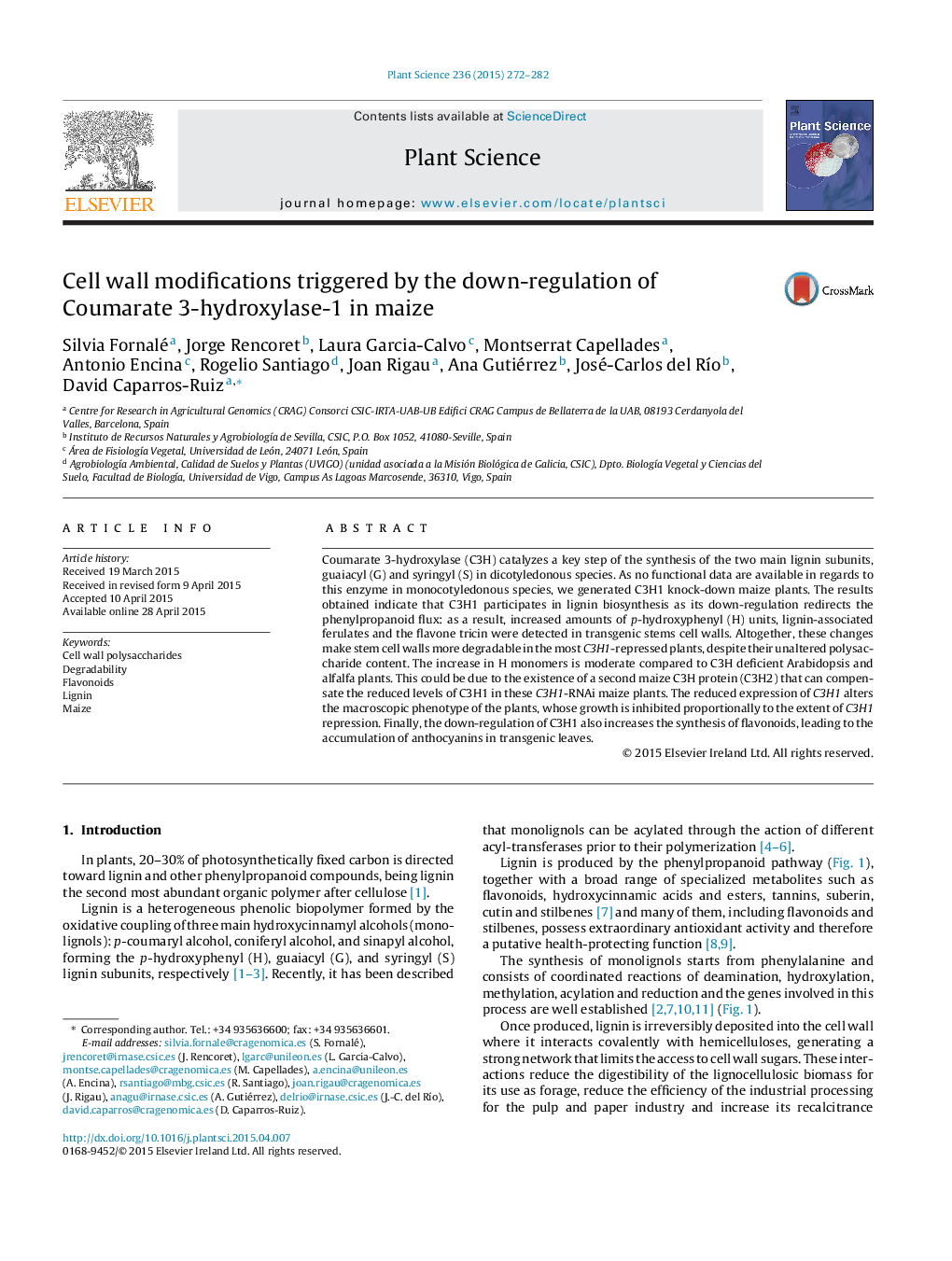| Article ID | Journal | Published Year | Pages | File Type |
|---|---|---|---|---|
| 2017037 | Plant Science | 2015 | 11 Pages |
Abstract
Coumarate 3-hydroxylase (C3H) catalyzes a key step of the synthesis of the two main lignin subunits, guaiacyl (G) and syringyl (S) in dicotyledonous species. As no functional data are available in regards to this enzyme in monocotyledonous species, we generated C3H1 knock-down maize plants. The results obtained indicate that C3H1 participates in lignin biosynthesis as its down-regulation redirects the phenylpropanoid flux: as a result, increased amounts of p-hydroxyphenyl (H) units, lignin-associated ferulates and the flavone tricin were detected in transgenic stems cell walls. Altogether, these changes make stem cell walls more degradable in the most C3H1-repressed plants, despite their unaltered polysaccharide content. The increase in H monomers is moderate compared to C3H deficient Arabidopsis and alfalfa plants. This could be due to the existence of a second maize C3H protein (C3H2) that can compensate the reduced levels of C3H1 in these C3H1-RNAi maize plants. The reduced expression of C3H1 alters the macroscopic phenotype of the plants, whose growth is inhibited proportionally to the extent of C3H1 repression. Finally, the down-regulation of C3H1 also increases the synthesis of flavonoids, leading to the accumulation of anthocyanins in transgenic leaves.
Related Topics
Life Sciences
Agricultural and Biological Sciences
Plant Science
Authors
Silvia Fornalé, Jorge Rencoret, Laura Garcia-Calvo, Montserrat Capellades, Antonio Encina, Rogelio Santiago, Joan Rigau, Ana Gutiérrez, José-Carlos del RÃo, David Caparros-Ruiz,
